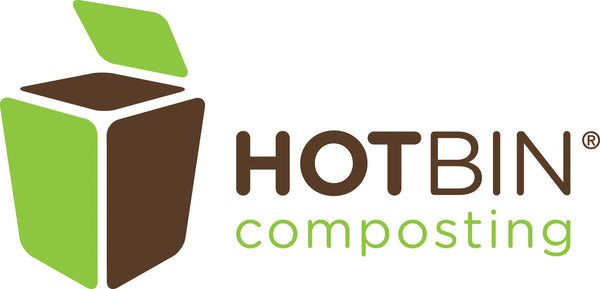What happens inside the HOTBIN
All composting obeys the fundamental laws of nature. It is dominated by bacteria - 'happy' bacteria deliver fast and successful composting.
Bacteria are at their happiest when they have:
Food
Bacteria need waste to eat. No waste = No bacterial activity = No heat produced.
Bacteria digests different wastes at different speed. Lots of easy to digest food results in fast quick heat release, slow to digest waste results in slow heat release.

Water
Bacteria need water to both grow and to help with digestion. If there is too little water the bacteria are unable to grow; if there is too much water, the waste becomes soggy and it block the air flow which restricts the oxygen the bacteria need.

Oxygen
Aerobic bacteria need oxygen. If there is not enough oxygen, their anaerobic cousins take over and create a stink and release methane (X24 GHG potency!).

Warmth
Bacteria digests waste 32 times faster at 140°F than at 50°F. As a rule of thumb, using 30 days in a month, if it takes 12 months in a cold heap at 50°F it will take 12 days in the HOTBIN running at 140°F.

| SAD |
|
| OK | Working but not at full speed |
| HAPPY | Working well and producing heat to hot composter |
What are the core principles of composting?
Composting is a natural process. It will happen under a huge range of environmental conditions. However, to get it working fast, you need four key conditions (food, warmth, oxygen and water) to be optimal. The four conditions are outlined in the Composting Core Principles diagram below.
How does the HOTBIN work?
It helps you manage the four conditions. It retains heat, controls airflow, extracts excess water (as steam). We have a PDF transcript of our talk at the Edible Garden Show which covers the conditions in more depth.
